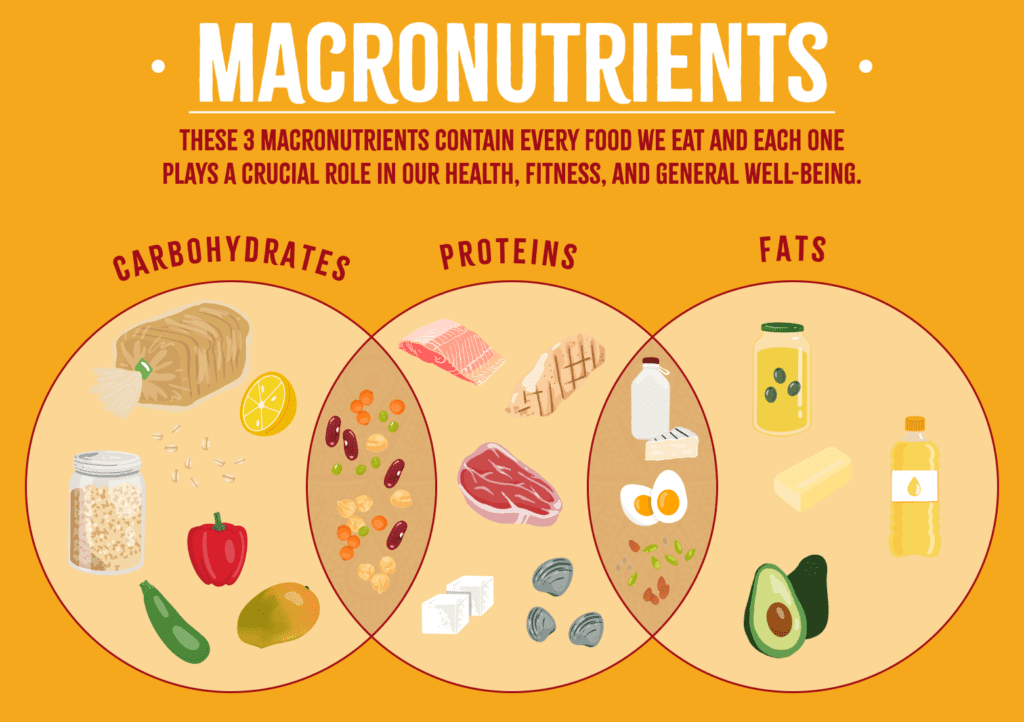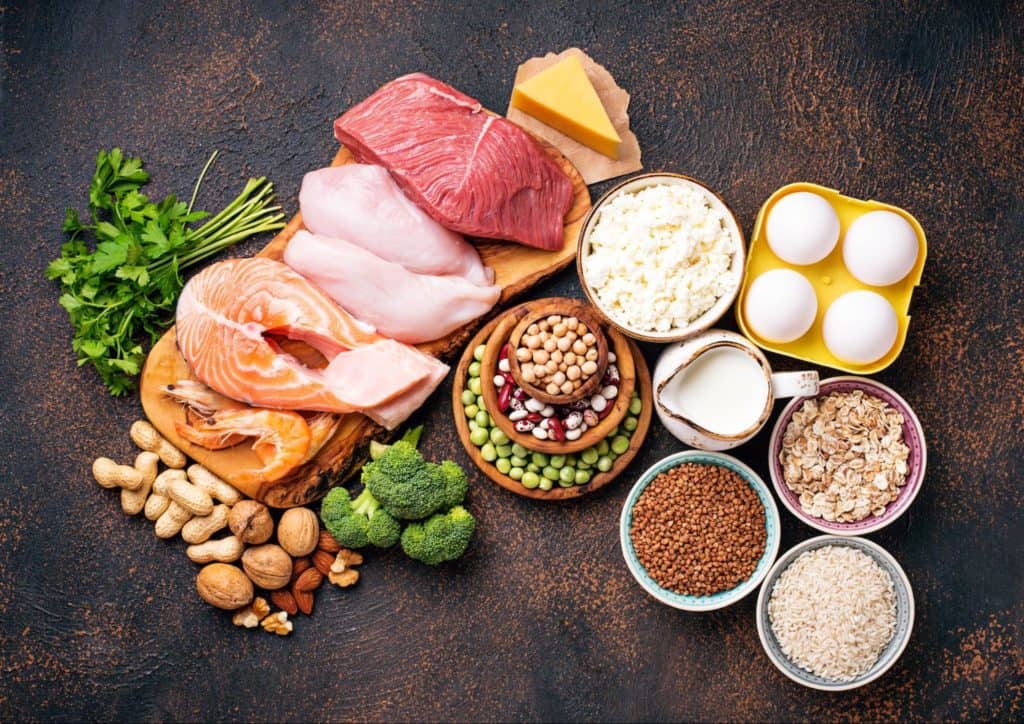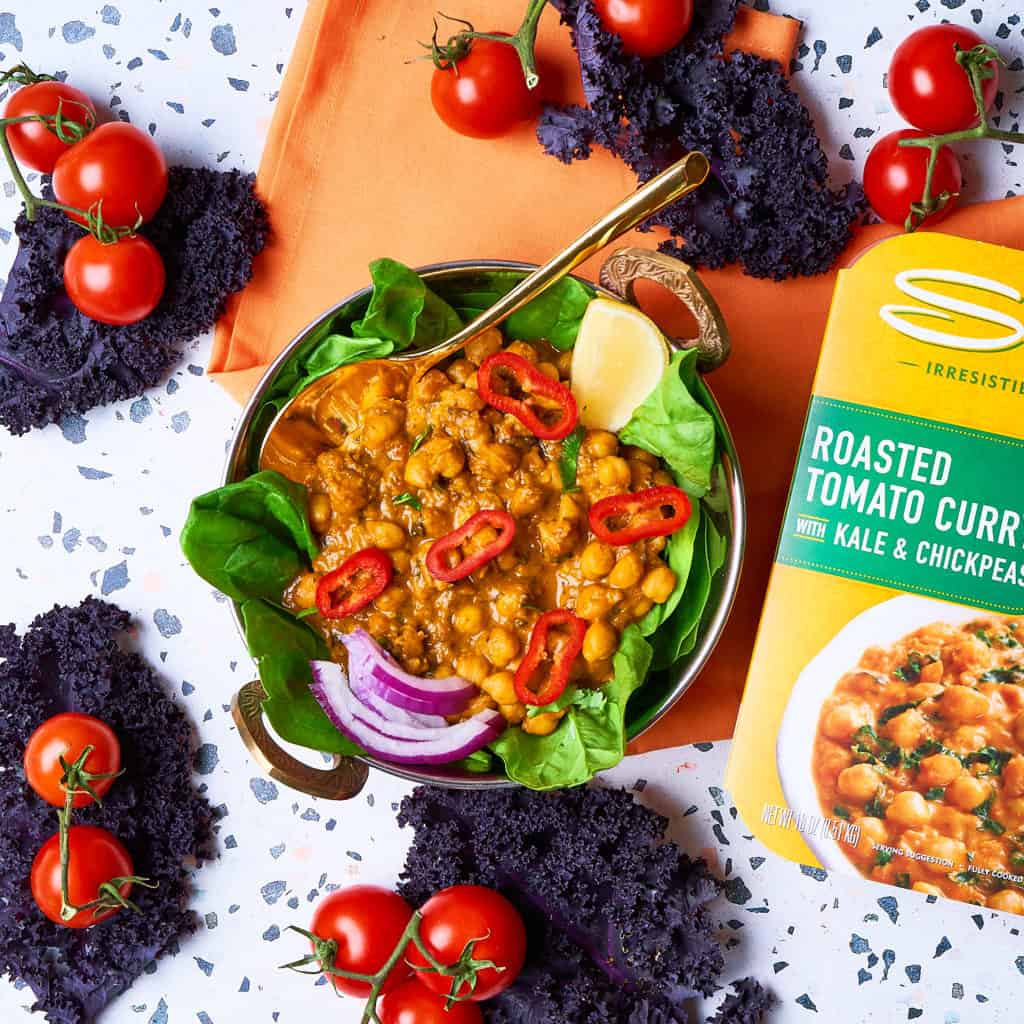What Are Macros? Here’s Everything You Should Know
This useful guide breaks down everything you need to know about macros, including how to track them & how to calculate how many you need per day.

You are what you eat, especially when it comes to macronutrients.
If your diet is mostly made up of simple carbohydrates like white bread, sweet cereal, and refined sugar, it’s unlikely that your body will perform at its best. But what if you find a healthy balance between lean proteins, good fats, and complex carbohydrates?
Now you’re cooking. This logic is precisely the energy powering the increasing trend of macronutrient counting.
In this article, we’re going to explore the key characteristics that make up each macronutrient and discover a few simple, mouthwatering dishes that will keep your macros in perfect balance and your taste buds hungry for more.
WHAT ARE MACROS IN FOOD?

Macronutrients or “macros” are big-picture nutrients, like protein, fat, and carbohydrates, as opposed to micronutrients like Vitamin B12, Thiamine, or Iron.
A focus on macronutrients allows the health-conscious among us to break their food intake down into helpful categories without cracking open a thick dietary textbook.
Counting macros offers the perfect happy medium between knowing too little about what you eat and overwhelming yourself with the minutiae of nutritional science.
Here are the key macronutrients (macros) you need to know:
- Proteins
- Fats
- Carbohydrates
These three macronutrients make up the breadth of all the foods we eat, from meats to grains, vegetables to dairy, and even sweets. Each plays a crucial role in our health, fitness, and general well-being.
WHAT’S A MACRO DIET?
First, let’s understand that diet and nutrition are not one-size-fits-all. You’ll need to experiment and see what works best for you.
That said, for those concentrating on shedding a few extra pounds or becoming more conscious of their everyday food choices, keeping a tab of macros over simple calorie counting might just do the trick.
They call it IIFYM—translating into ‘If It Fits Your Macros.’ This is a rather flexible diet route because it allows you to consume all kinds of food but with accountability. You’ve got to stay within the ‘macro limit.’
HOW MANY MACROS SHOULD I EAT?
The answer is a three-step process.
STEP 1: CALCULATE DAILY CALORIE INTAKE
If you already know how many calories you need to consume based on factors like age, gender, weight, etc., then you can proceed to step 2. If not, this tool will make life easier and help you get a total for your calorie intake.
STEP 2: CONVERT CALORIE INTAKE INTO MACROS INTAKE
There are established macronutrient ratios to suit your body’s needs. The ratios you choose will help determine what food groups the desired calories will come from. For now, let’s use a basic macro ratio of 30% proteins, 40% carbohydrates, and 30% fat.
STEP 3: CALCULATE DAILY INTAKE
Using the above ratio, let’s calculate a daily food intake. Assume that your total calorie intake is 1800 calories per day and that we use the ratio of 30:40:30 (proteins, carbs, fat).
Proteins:
- 30% of your calories must come from proteins. So, 1800 (total calories) x 0.30 (ratio of protein) = 540 calories from protein.
- There are 4 calories per gram of protein
- So, 540/4 = 135 grams of protein (this is the total amount in grams for your intake of proteins)
Carbohydrates:
- 40% of your calories must come from carbs. 1800 x 0.40 = 720 calories from carbohydrates
- There are 4 calories per gram of carbohydrates
- 720/4 = 180 grams of carbohydrates (this is the total amount in grams for your intake of carbs)
Fats:
- 30% of your calories must come from fats. Hence, 1800 x 0.30 = 540 calories
- There are 9 calories per gram of fat
- 540/9 = 60 grams of fat (this is the total amount in grams for your intake of fats)
Seems like a lot? If you’re unsure how to track macros, just use this macro calculator to find out your macros intake (in grams) for each day.
A quick note: Macro ratios and calorie needs aren’t constant. As you lose or gain weight, you’ll reach different stages in your diet. As your body’s needs adjust, your diet should adjust as well. So, when you hit your goals, rework your macros (like you would with calories) to fit your new circumstances.
Now that you know all about the macros-based diet, let’s get back to the three food pillars.
Proteins

Proteins are made up of amino acids, and each amino acid has an important task in building the cells of our body and providing us with our energy, either in the form of fatty acids or directly as protein.
Healthy protein is arguably the most important macro in any diet. This is because of its role in healing, maintaining, and recovering the cells in our muscles, heart, brain, and bones.
Enzymes made up of proteins also support the functions of regulating metabolism, appetite, and gut health, all of which are major contributors to fitness and diet health.
Finding good protein is easy: meat, dairy, legumes, and even some grains contain all or some of the proteins we need on a daily basis.
Fish, poultry, eggs, chickpeas, quinoa, and soybeans are all examples of common foods with high protein content. Including some or all of these in your weekly meal plans will ensure your protein intake is well-balanced and healthy.
So go ahead; you’ve got a golden excuse to whip up a bowl of delicious Chicken Tikka Masala or spicy Vindaloo.
Carbohydrates

For many, carbohydrates are the most difficult macro to avoid — they’re abundant in many of our favorite foods like pasta, cereal, bread, vegetables, rice, and starches (such as potatoes or yams).
Carbohydrates are an integral part of daily energy production. The body quickly breaks down carbohydrates into sugars. That’s why runners often load up on carbohydrates before a big race. They’re the perfect fuel when you need an extended burst.
However, what goes up must come down. If you often find yourself dozing off in the middle of the afternoon, it might be due to a lunch that was rich in carbohydrates. If you combine a high carbohydrate intake with a sedentary lifestyle, you’ll find a quick energy boost at the expense of an extended carbohydrate crash.
Fortunately, not all carbohydrates are created equal. While a giant bowl of refined pasta might lead to an untimely exhaustion, a moderate bowl of brown rice combined with veggies might give your body the sustainable energy it needs.
This is because there are two types of carbohydrates — simple carbs and complex carbs.
Simple carbohydrates are the basic sugars and sweeteners we find in most store-bought foods, from refined sugar to soda pop to strawberry jam. Most ‘snack foods’ like cookies, crackers, and chips are high in simple carbohydrates. This is cheap, easy energy, but the benefits are often fleeting, and the excess is always stored as fat.
Complex carbohydrates, on the other hand, are long strands of sugar molecules that are commonly found in whole grains, vegetables, legumes (beans and lentils), and peas. These take longer to digest and often deliver more nutrients per bite.
Imagine drinking a triple shot of espresso first thing in the morning compared to a steady diet of drip coffee over the course of many hours.
The espresso certainly provides you with a rapid energy rush, but it also comes with potential jitters, anxiety, and an eventual nasty crash down to earth. If instead, you opt to gradually sip on a tall mug of drip coffee over an extended period of time, you might provide your body with the sustained focus and concentration you need to knock out tasks left and right.
It’s not that simple carbohydrates are evil. They make up some of the most delicious foods on earth, like our bright and colorful Lemon Rice. However, if you want to give your body the sustained nourishment it needs, you should probably start to think of simple carbohydrates as occasional treats rather than the backbone of your diet.
Fats

Let’s dispel a widespread myth once and for all — eating fat does not make you fat.
Many high-fat foods are incredibly healthy. Think aged cheeses, avocadoes, mixed nuts, and oily fish. Even foods that contain their fair share of saturated fats can still land on the healthy side of the scale when consumed in moderation.
As with most macros, it’s all about ‘balance.’
Fat provides our bodies with long-term energy storage and many necessary protective barriers inside the body. Lipids (fats) line our organs, musculature, and skeletal systems, keeping us safe from disease and wear-and-tear. They also allow the body to absorb essential vitamins like vitamin A, vitamin D, and vitamin E.
As with proteins and carbs, there are many types of fats, each contributing differently to our bodies. The two that most people have heard of are saturated and trans fats.
Neither are considered particularly healthy, as they both lead to an eventual increase of your bad cholesterol levels, but trans fats are especially heinous. Most modern nutrition experts agree that avoiding all trans fats is a good idea, while consumption of saturated fats like those found in fatty meats, butter, and pastries should be kept to a relative minimum.
Fortunately, there are healthy fats that provide all the benefits of fat with little of the bad side. Unsaturated (mono and poly) fats, as well as omega-3 and omega-6 fatty acids like those found in soybeans and fatty fish play a crucial role in maintaining a healthy immune system, ensuring organ health, and maintain cholesterol at healthy levels.

Master Your Macros With Sukhi’s
At Sukhi’s, we do our best to ensure that through all our delicious food offerings, we provide you with an adequate blend of macronutrients. Not only will you enjoy all of our meals, like our Chicken Coconut Curry with Mango or Roasted Tomato Curry, but your body will thank you for them.
If you want to get your hands dirty in the kitchen, read through our recipe blog and whip up one of ours, like our Lemony Rice and Pea Salad, Roasted Pumpkin Coconut Curry, or Vindaloo and Fresh Mint Lamb Burger.
2 responses to What Are Macros? Here’s Everything You Should Know
[…] white and basmati rice are almost entirely comprised of carbohydrates, breaking down into sugar and giving you a burst of short-term energy. However, brown rice retains […]
[…] wonder food recycling is trending, along with meal prepping and macro counting, but it’s not just a fad. Besides the savings you’ll see on your grocery bill, it’s an […]